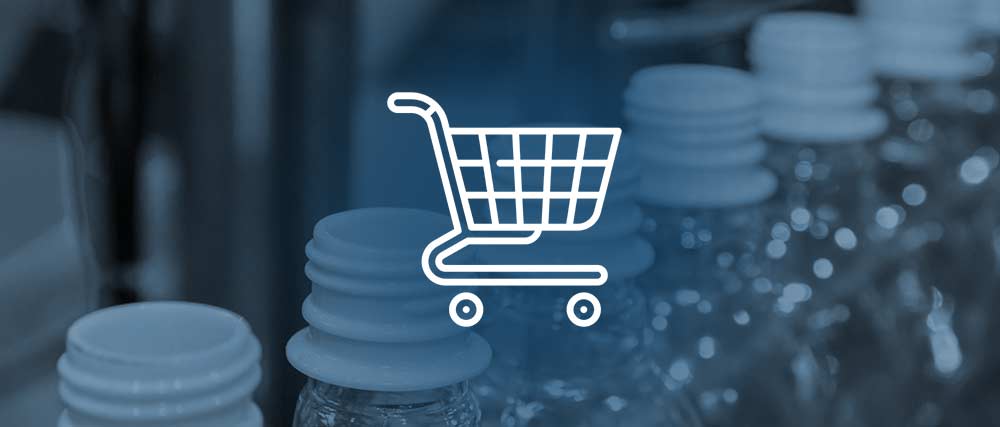Share
Author
George Anderson
Share
Packaging companies face unique challenges when they look at B2B eCommerce. From customer-specific SKUs, to warehousing agreements for ordering and fulfillment, it’s hard to imagine how B2B eCommerce might work at your organization.
Yet packaging customers want self-service. They prefer suppliers who are easy to do business with.
So what stands in the way of packaging companies launching B2B eCommerce?
And how can you overcome those challenges?
Let’s take a look.
Challenge 1: Internal dependence on tribal knowledge
If you sell one custom SKU to one customer (rather than one SKU to many customers), then there’s lots of human-to-human communication required to nail down the attributes of that SKU. Your customer service reps are subject matter experts when it comes to your products, and they’re skilled at advising your customers on product requirements and bringing those specifications back to manufacturing.
Clearly, there’s a lot of tribal knowledge involved in supporting these processes. Your customer service reps have a wealth of knowledge in their heads.
That’s all well and good for consulting with customers and determining requirements.
It’s not good when it comes to the mundane details of checking orders for quality, entering them in SAP, and answering customer inquiries about stock levels and status. When this kind of information lives in your reps’ heads (rather than in SAP), it’s impossible to tell where the real truth is.
Winning with B2B eCommerce for packaging
“Having live access to their entire account portfolio enables our customers to trust the information they are seeing. They can self-serve immediately and export data to analyze further as required.”
—Carey Leaman, Emmerson Packaging
What if Joe, your top customer service rep, goes on vacation—but the status of his biggest client’s recent order is in his head, not in SAP?
That’s not a scalable data governance process. It’s also bad news for B2B eCommerce, which needs to display data from a single source of truth (SAP ERP).
What’s more, using humans for this kind of information is inefficient. Quality checks on orders can take 15-30 minutes. Per order.
Solution: Force yourself to make SAP your “single source of truth”
If you want to run a seamless B2B eCommerce program, the first step is to move all business processes and data into SAP ERP. That’s the only way to ensure that customers get the same story in every channel, whether it’s B2B eCommerce, an EDI order, or a phone call with a customer service rep.
This is a tall order for some packaging companies. However, a trusted advisor (like Corevist) can help you clean up your SAP data as part of the B2B eCommerce project.
Speaking of dirty data… let’s talk about that.
Challenge 2: Dirty data in SAP ERP
If some of your business data and logic lives in the heads of your reps, then SAP ERP doesn’t fully reflect the reality of your business.
In other words, you may have dirty data and logic in SAP.
This is bad news for the health of your business. What happens when a customer calls about an invoice, and reps can’t find it in SAP because it lives in a sticky note on someone’s monitor?
Or what about that order that never makes it to production because Joe, your top CSR, is out sick today—and he forgot about it?
Notice that we’re not even talking about B2B eCommerce yet. We’re talking about data health and the effect it has on every aspect of the business. But dirty data in SAP hurts B2B eCommerce, too. Without one source of truth for business data and logic, you have no standard to which you can hold your B2B eCommerce experience.
Not to mention the fact that even the best SAP integration can’t give B2B eCommerce the right data if SAP is wrong.
Solution: Let integrated B2B eCommerce act as a catalyst to clean up SAP ERP
A solution like the Corevist Platform includes prebuilt, comprehensive integration to SAP ERP. The Corevist Platform doesn’t store business data—rather, it reads and writes to SAP in real time.
This pushes you to create a better customer experience, as it’s designed to give customers 100% accurate data and personalization straight from SAP.
But it also pushes you to streamline your business processes and data governance.
In fact, you can use the B2B eCommerce project as an opportunity to centralize everything in SAP. This is better for your operations, your data landscape, and your customers (since they’ll get consistent information in every channel).
Now, when it comes to SAP integration, not all B2B eCommerce solutions are created equal.
Let’s talk about that.
Challenge 3: Limited IT resources to support SAP integration
When it comes to SAP integration for B2B eCommerce, packaging companies have two options:
- Standalone B2B eCommerce platform with middleware integration. With this architecture, the B2B eCommerce solution has its own database for products, customers, orders, and so on. This architecture will need constant synchronization with SAP through a middleware solution. Your IT team will have to keep all 3 systems perfectly aligned so data maps without errors.
- B2B eCommerce solution that doesn’t store any data, but reads and writes to SAP directly, in real time, through an integration that’s included in the platform. With this architecture, you maintain business data and logic in one place only (SAP ERP) and the B2B eCommerce solution always follows suit. (Hint: This is how the Corevist Platform works.)
Most B2B eCommerce platforms will require the first type of architecture. Fundamentally, they compete with SAP ERP to own your business data. They will require a team of full-time resources to support and upgrade.
That’s a tall order for packaging companies with limited IT resources.
Solution: Platform that includes direct, real-time SAP integration
Corevist’s architecture is built for companies who can’t dedicate full-time resources to supporting a third-party SAP integration for B2B eCommerce. In fact, our platform includes 49 prebuilt integration points to SAP ERP that cover the entire customer journey for packaging companies. Since we manage the full stack for every Corevist solution, you maintain data in one place only—SAP ERP.
The takeaway: Don’t wait to get started
Gone are the days when packaging companies could wait to launch improvements to customer experience. Today’s digital environment is so competitive, companies need to move fast to delight customers and retain market share.
That’s why we built the Corevist Platform. You can start small with tracking for orders and invoices, then add online ordering, payments, and product catalogs. All along the way, you get our expert team supporting and upgrading your solution.
Want to become Easier To Do Business With?
Check out the Corevist Platform.
Managed B2B portals and eCommerce with prebuilt integration for ECC and S/4HANA.











